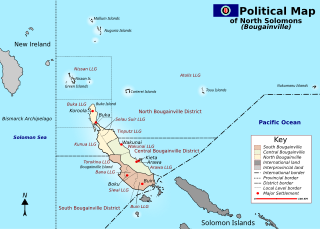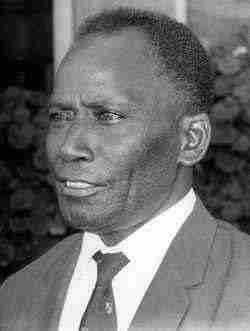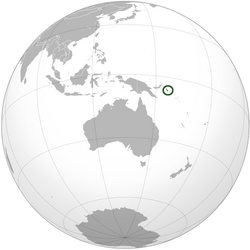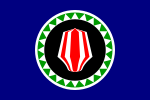
The politics of Papua New Guinea takes place in a framework of a parliamentary representative democratic multi-party system, whereby the prime minister is the head of government. Papua New Guinea is an independent Commonwealth realm, with the monarch serving as head of state and a governor-general, nominated by the National Parliament, serving as their representative. Executive power is exercised by the government. Legislative power is vested in both the government and parliament.

Bougainville, officially the Autonomous Region of Bougainville, is an autonomous region in Papua New Guinea. The largest island is Bougainville Island, while the region also includes Buka Island and a number of outlying islands and atolls. The current capital is Buka, situated on Buka Island.

Bougainville Island is the main island of the Autonomous Region of Bougainville, which is part of Papua New Guinea. Its land area is 9,300 km2 (3,600 sq mi). The population of the whole province, including nearby islets such as the Carterets, is approximately 300,000. The highest point is Mount Balbi, on the main island, at 2,715 m (8,907 ft).

For administrative purposes, Papua New Guinea is divided into administrative divisions called provinces. There are 22 provincial-level divisions, which include 20 provinces, the Autonomous Region of Bougainville, and the National Capital District of Port Moresby.

Bougainville, an autonomous region of Papua New Guinea (PNG), has been inhabited by humans for at least 29,000 years, according to artefacts found in Kilu Cave on Buka Island. The region is named after Bougainville Island, the largest island of the Solomon Islands archipelago, but also contains a number of smaller islands.
Bougainville Copper Limited (BCL) is a mining company of Papua New Guinea (PNG) that is listed on the Australian Securities Exchange (ASX). BCL operated the copper, gold and silver mine at the Panguna mine on Bougainville Island in PNG from 1971 to 15 May 1989, when mining operations were officially halted due to militant activity. The mine has remained closed since then.

Bougainville Independence Movement (BIM) was a political party in the Autonomous Region of Bougainville, of eastern Papua New Guinea.

New Bougainville Party (NBP) is a political party in the Autonomous Region of Bougainville in Papua New Guinea.
Francis Ona was a Bougainville secessionist leader who led an uprising against the Government of Papua New Guinea as part of the Bougainville Civil War. He and his followers were concerned about the environmental and social effects of the operation of the Panguna mine by Bougainville Copper, a subsidiary of Rio Tinto Group. On 17 May 1990, Ona declared the independence of the Republic of Me'ekamui. It was not recognised internationally. In May 2004 Ona proclaimed himself "King of Me'ekamui." While resisting the peace process and 2005 elections, Ona mostly stayed in a safe haven, where his BRA forces controlled territory. He died of malaria in his village.

The Flag of Bougainville is a symbol of the Autonomous Region of Bougainville in Papua New Guinea. It was originally adopted in 1975 by the secessionist Republic of the North Solomons.

The Panguna mine is a large copper mine located in Bougainville, Papua New Guinea. Panguna represents one of the largest copper reserves in Papua New Guinea and in the world, having an estimated reserve of one billion tonnes of ore copper and twelve million ounces of gold. The mine has been closed since 1989 and has ceased all production.

Buin is a town on Bougainville Island, and the capital of the South Bougainville District, in the Autonomous Region of Bougainville, in eastern Papua New Guinea. The island is in the northern Solomon Islands Archipelago of the Melanesia region, in the South Pacific Ocean.

The Bougainvillean presidential election of 2010 was held in Bougainville, an autonomous region of Papua New Guinea. The presidential contest was part of the overall general election on the island. Voting began on May 7, 2010, and ended May 24, 2010. Final results for the election were announced on June 8, 2010.

John Momis is a Bougainvillean politician who served as the President of the Autonomous Region of Bougainville in Papua New Guinea between 2010 and 2020.
Noah Musingku, under the name "King David Peii II", claims to be head of the twin "kingdoms" of Papaala and Me’ekamui on Bougainville Island in the North Solomon Islands, which are not considered to be real kingdoms by any government authority. Musingku is the creator of U-Vistract, which was banned as a pyramid scheme in Papua New Guinea. After the banning of U-Vistract in Papua New Guinea, Musingku fled to Bougainville, taking advantage of the political situation on Bougainville to avoid prosecution and the aggrieved investors of U-Vistract from whom he had collected millions of kina. As of November 2020, his "kingdoms" remain at large, mainly due to fears of destabilising the island and because many of the local authorities have invested in him. Musinku's influence in Bougainville is widely considered one of the chief problems facing President of the Autonomous Region of Bougainville Ishmael Toroama in his attempts to stabilise Bougainville in preparation for its independence.

The Bougainville conflict, also known as the Bougainville Civil War, was a multi-layered armed conflict fought from 1988 to 1998 in the North Solomons Province of Papua New Guinea (PNG) between PNG and the secessionist forces of the Bougainville Revolutionary Army (BRA), and between the BRA and other armed groups on Bougainville. The conflict was described by Bougainvillean President John Momis as the largest conflict in Oceania since the end of World War II in 1945, with an estimated 15,000–20,000 Bougainvilleans dead, although lower estimates place the toll at around 1,000–2,000.
John Bika was a Papua New Guinea and Bougainvillean politician.

A non-binding independence referendum was held in Bougainville, an autonomous region of Papua New Guinea, between 23 November and 7 December 2019. The referendum question was a choice between greater autonomy within Papua New Guinea and full independence; voters voted overwhelmingly (98.31%) for independence.

Sir Paul Lapun was a Papua New Guinean politician. Both a supporter of independence for Papua New Guinea (PNG) and of the secessionist movement on Bougainville, Lapun served in the House of Assembly of Papua and New Guinea and in the first National Parliament of Papua New Guinea between 1972 and 1975, when he was Minister for Mines and Energy. He was instrumental in obtaining royalties for the people of Bougainville for the copper mine on their island. He was the first Papua New Guinean to receive a knighthood.
Moses Havini was a political activist from Buka Island in Papua New Guinea. He was a prominent campaigner for the independence of Bougainville from Papua New Guinea, beginning in the early 1970s. During the Bougainville Civil War he served as the official spokesman of the Bougainville Interim Government and Bougainville Revolutionary Army.












